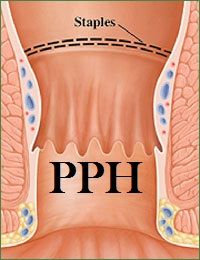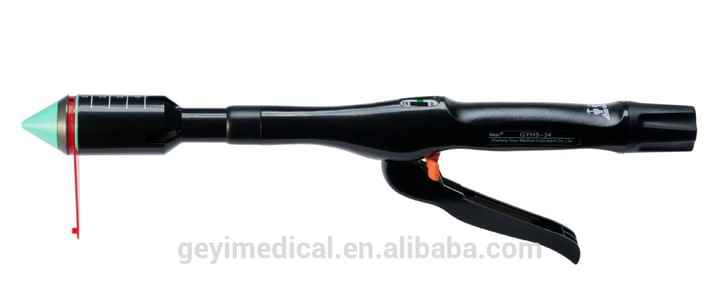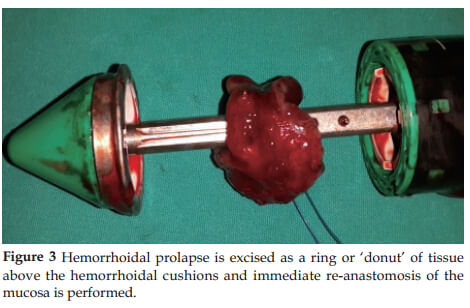Minimal Invasive Procedure For Haemorrhoids!
In 1995, Longo described a new and innovative operative technique for hemorrhoid. This novel procedure to treat piles is not a hemorrhoidectomy. In this technique neither the anal mucosa and nor the hemorrhoidal tissue is excised. The procedure of MIPH is performed in the patient with piles on distal rectal mucosa and submucosa, proximally to the dentate line. MIPH hemorrhoidectomy includes excision of a band of excessive or loose prolapse mucosa and submucosa within the rectum, proximally to the hemorrhoidal tissue and fixation of the mucosa by stapled end to end mucosa anastomosis. This minimally invasive maneuver occlude the blood supply of the superior hemorrhoidal artery above the hemorrhoidal tissue and thus piles is cured as well as prolapsed mucosa is retracted up.
Description:

What are the indications PPH or MIPH?
Indications for PPH include patients with grade III hemorrhoids, with uncomplicated grade IV hemorrhoids that are reducible at surgery or after manipulation in the operating room. In the surgery of MIPH hemorrhoidal tissue is not excised during the procedure, and in those who failed other treatment modalities.
How it work and what are the benefits of Stapled Hemorrhoidopexy?
Stapled Hemorrhoidopexy procedure uses a special device to remove a ring of tissue from the anal canal. Removing the tissue cuts off blood supply to the hemorrhoids, causing them to shrink. The tissue ring is then secured with staples. This helps hold the tissue in place. Stapled hemorrhoidopexy is a significantly less painful operation and offers significant advantages in terms of hospital stay and symptom control in the long term, making for a significantly earlier return to work.
What are the Contraindications of Minimally Invasive Procedure for Hemorrhoid?
Complication of this surgery include:
- Active sepsis,
- Anal stenosis, and
- Full-thickness rectal prolapse
Because these conditions are not adequately treated by PPH.
What are the complications of Stapled Hemorrhoidectomy?
Although PPH is usually considered relatively safe and simple, complications still may occur and sometimes may be devastating.
Most common complication are:
- Hemorrhage
- Incontinence
- Anal stenosis
- Fistula, and
- Septic complications
Possible complications of Minimally Invasive Procedure for Haemorrhoid (MIPH) include anal stenosis, postoperative pain, urinary retention, secondary hemorrhage, anal fissure, abscess or fistula, formation of skin tags, pseudo polyps, and incontinence. Postoperative pain is a main concern after Minimally Invasive Procedure for Haemorrhoid (MIPH); none of the techniques offers the patient a completely pain-free recovery. Urinary retention can be a result of pain in some of the patient, narcotics and anticholinergic drugs, fluid overload, high ligation of the hemorrhoidal pedicle and operative trauma.
Minimally Invasive Procedure for Haemorrhoid (MIPH), serious complications have been reported and include, rectal perforation, retroperitoneal sepsis, retropneumoperitoneum, rectal stricture, rectal obstruction, and rectovaginal fistula. These benefits may appear only after surgeons have gained sufficient experience with the procedure. However, skin tags and recurrent prolapse occurred at higher rates after PPH. The meta analysis did not find significant difference in the rates of postoperative bleeding, urinary retention, anal fissure, stenosis, or difficulties in evacuation.







+1.svg)
